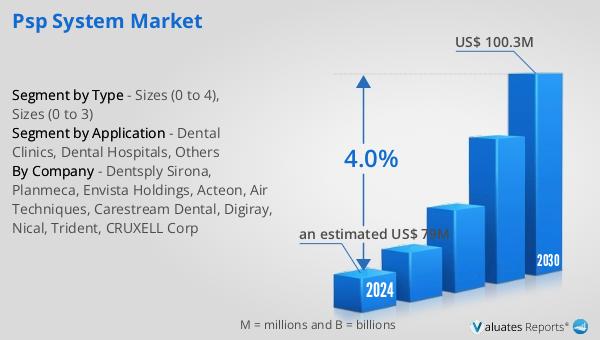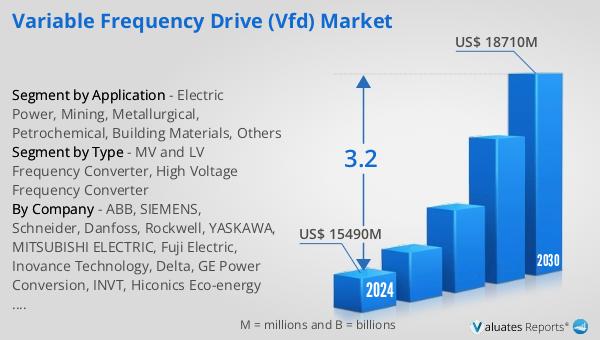What is Global PSP System Market?
The Global PSP (Photostimulable Phosphor) System Market is a significant segment within the broader medical imaging industry. PSP systems are primarily used in digital radiography, where they serve as a bridge between traditional film-based radiography and fully digital systems. These systems utilize a special phosphor plate that captures X-ray images, which are then scanned and converted into digital form for analysis and storage. The global market for PSP systems is driven by the increasing demand for advanced diagnostic tools that offer high-quality imaging with reduced radiation exposure. This demand is particularly strong in the healthcare sector, where accurate and efficient imaging is crucial for diagnosis and treatment planning. The market is characterized by a diverse range of products catering to various medical fields, including dental, orthopedic, and general radiography. Technological advancements, such as improved image resolution and faster processing times, are key factors propelling the growth of the PSP system market. Additionally, the rising prevalence of chronic diseases and the growing aging population are contributing to the increased adoption of these systems worldwide. As healthcare providers continue to seek cost-effective and efficient imaging solutions, the global PSP system market is expected to expand further, offering numerous opportunities for innovation and development.

Sizes (0 to 4), Sizes (0 to 3) in the Global PSP System Market:
In the Global PSP System Market, the categorization of sizes plays a crucial role in meeting the diverse needs of healthcare providers. Sizes (0 to 4) and Sizes (0 to 3) refer to the dimensions of the phosphor plates used in these systems, which are designed to accommodate different imaging requirements. Size 0 plates are the smallest and are typically used for pediatric dental imaging, where the patient's mouth is smaller, and the imaging area is limited. These plates provide high-resolution images while ensuring patient comfort and minimizing radiation exposure. Size 1 plates are slightly larger and are often used for adult anterior dental imaging, where a more detailed view of the front teeth is required. Size 2 plates are the most commonly used in dental practices, as they offer a balance between image size and patient comfort, making them ideal for bitewing and periapical imaging. Size 3 plates are longer and are specifically designed for bitewing imaging, providing a comprehensive view of the posterior teeth and the surrounding bone structure. Finally, Size 4 plates are the largest and are used for occlusal imaging, capturing a broad view of the dental arch and aiding in the diagnosis of complex dental conditions. The availability of these different sizes allows healthcare providers to select the most appropriate plate for each specific imaging task, ensuring optimal image quality and patient care. The choice of plate size is influenced by factors such as the patient's age, the area being imaged, and the specific diagnostic requirements. For instance, in pediatric dentistry, smaller plates are preferred to accommodate the limited space and ensure patient comfort. In contrast, larger plates are used in adult imaging to capture more extensive areas and provide detailed diagnostic information. The flexibility offered by the range of plate sizes in the Global PSP System Market is a key factor driving its adoption across various medical fields. By catering to the diverse needs of healthcare providers, these systems enhance diagnostic accuracy and improve patient outcomes. As the demand for advanced imaging solutions continues to grow, the importance of size customization in PSP systems is expected to increase, further fueling market expansion.
Dental Clinics, Dental Hospitals, Others in the Global PSP System Market:
The Global PSP System Market finds extensive usage in various healthcare settings, including dental clinics, dental hospitals, and other medical facilities. In dental clinics, PSP systems are widely used for routine dental imaging, such as bitewing, periapical, and panoramic X-rays. These systems offer several advantages over traditional film-based radiography, including faster image processing, reduced radiation exposure, and the ability to digitally store and share images. This makes them an ideal choice for dental clinics that require efficient and accurate imaging solutions to support diagnosis and treatment planning. The compact design and ease of use of PSP systems also make them suitable for small to medium-sized dental practices, where space and budget constraints may limit the adoption of more complex imaging technologies. In dental hospitals, PSP systems play a critical role in supporting a wide range of diagnostic and therapeutic procedures. These systems are used for comprehensive dental imaging, including full-mouth X-rays, which are essential for diagnosing complex dental conditions and planning surgical interventions. The high-resolution images produced by PSP systems enable dental professionals to accurately assess the condition of teeth, gums, and surrounding bone structures, facilitating precise treatment planning and monitoring. Additionally, the digital nature of PSP systems allows for easy integration with electronic health records, enhancing the efficiency of patient management and communication among healthcare providers. Beyond dental clinics and hospitals, PSP systems are also utilized in other medical facilities, such as orthopedic and veterinary clinics. In orthopedic settings, PSP systems are used for imaging bones and joints, aiding in the diagnosis and treatment of musculoskeletal conditions. The ability to produce high-quality images with minimal radiation exposure is particularly beneficial in orthopedic imaging, where repeated X-rays may be necessary for monitoring treatment progress. In veterinary clinics, PSP systems are used for imaging animals, providing valuable diagnostic information for a wide range of conditions. The versatility and adaptability of PSP systems make them a valuable tool in various healthcare settings, contributing to improved diagnostic accuracy and patient care. As the demand for advanced imaging solutions continues to grow, the usage of PSP systems in dental clinics, dental hospitals, and other medical facilities is expected to expand, driving further innovation and development in the Global PSP System Market.
Global PSP System Market Outlook:
The global market for PSP Systems was valued at approximately $146 million in 2024, reflecting its significant role in the medical imaging industry. Over the years, this market has shown a steady growth trajectory, driven by the increasing demand for advanced diagnostic tools that offer high-quality imaging with reduced radiation exposure. By 2031, the market is projected to reach a revised size of around $178 million, growing at a compound annual growth rate (CAGR) of 3.0% during the forecast period. This growth can be attributed to several factors, including technological advancements in PSP systems, the rising prevalence of chronic diseases, and the growing aging population. As healthcare providers continue to seek cost-effective and efficient imaging solutions, the demand for PSP systems is expected to increase, offering numerous opportunities for innovation and development. The market's expansion is also supported by the increasing adoption of digital radiography in various medical fields, including dental, orthopedic, and general radiography. The ability of PSP systems to provide high-resolution images with minimal radiation exposure makes them an attractive option for healthcare providers looking to enhance diagnostic accuracy and improve patient outcomes. As the global PSP system market continues to evolve, it is poised to play a crucial role in shaping the future of medical imaging, offering new possibilities for diagnosis and treatment planning.
| Report Metric | Details |
| Report Name | PSP System Market |
| Accounted market size in year | US$ 146 million |
| Forecasted market size in 2031 | US$ 178 million |
| CAGR | 3.0% |
| Base Year | year |
| Forecasted years | 2025 - 2031 |
| Segment by Type |
|
| Segment by Application |
|
| Consumption by Region |
|
| By Company | Dürr Dental, Envista, Carestream Dental, Planmeca, Acteon, Digiray, CRUXELL Corp, Owandy Radiology, Nical, Trident |
| Forecast units | USD million in value |
| Report coverage | Revenue and volume forecast, company share, competitive landscape, growth factors and trends |
